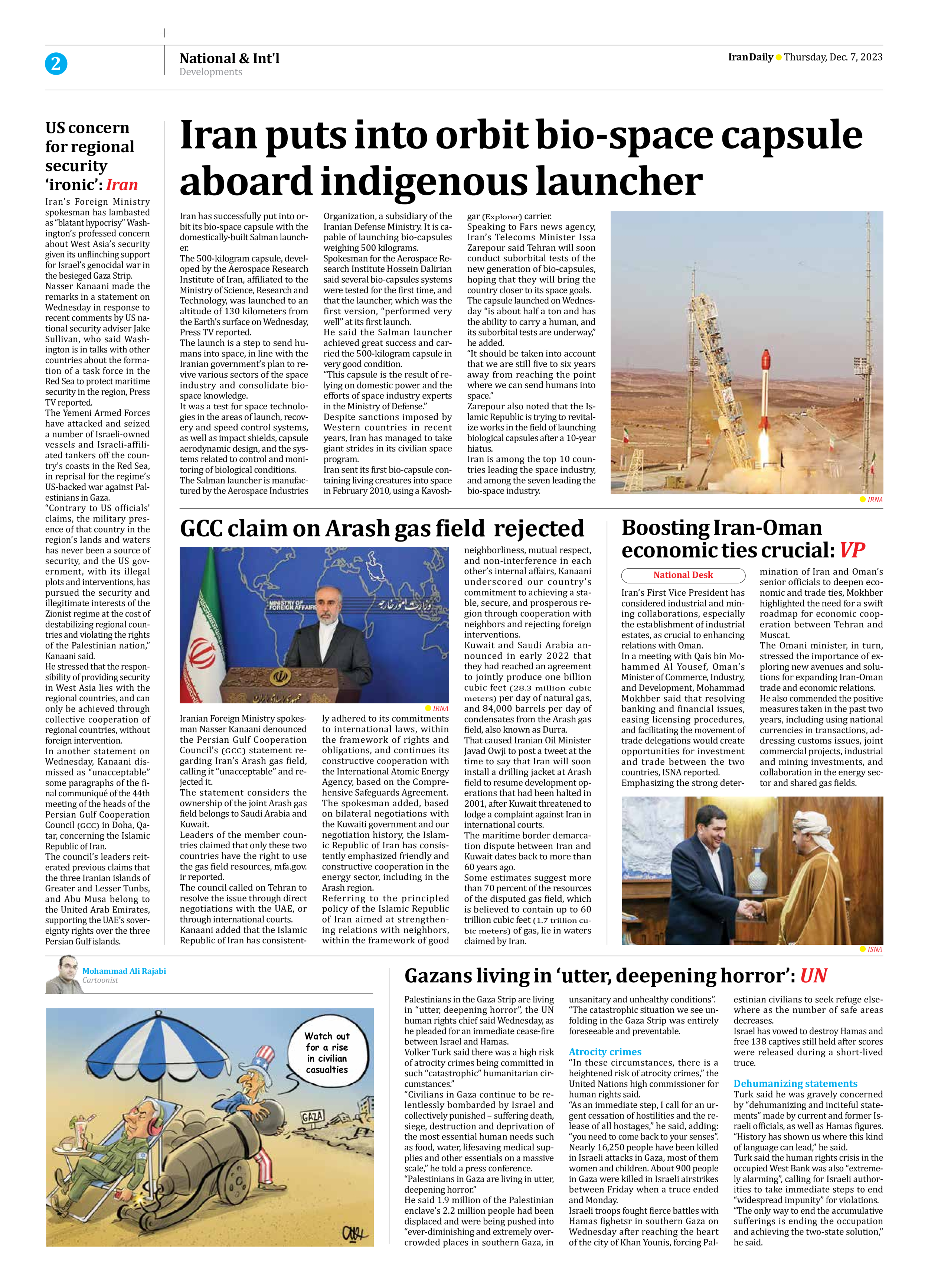
Copy in clipboard...
GCC claim on Arash gas field rejected
The statement considers the ownership of the joint Arash gas field belongs to Saudi Arabia and Kuwait.
Leaders of the member countries claimed that only these two countries have the right to use the gas field resources, mfa.gov.ir reported.
The council called on Tehran to resolve the issue through direct negotiations with the UAE, or through international courts.
Kanaani added that the Islamic Republic of Iran has consistently adhered to its commitments to international laws, within the framework of rights and obligations, and continues its constructive cooperation with the International Atomic Energy Agency, based on the Comprehensive Safeguards Agreement.
The spokesman added, based on bilateral negotiations with the Kuwaiti government and our negotiation history, the Islamic Republic of Iran has consistently emphasized friendly and constructive cooperation in the energy sector, including in the Arash region.
Referring to the principled policy of the Islamic Republic of Iran aimed at strengthening relations with neighbors, within the framework of good neighborliness, mutual respect, and non-interference in each other’s internal affairs, Kanaani underscored our country’s commitment to achieving a stable, secure, and prosperous region through cooperation with neighbors and rejecting foreign interventions.
Kuwait and Saudi Arabia announced in early 2022 that they had reached an agreement to jointly produce one billion cubic feet (28.3 million cubic meters) per day of natural gas, and 84,000 barrels per day of condensates from the Arash gas field, also known as Durra.
That caused Iranian Oil Minister Javad Owji to post a tweet at the time to say that Iran will soon install a drilling jacket at Arash field to resume development operations that had been halted in 2001, after Kuwait threatened to lodge a complaint against Iran in international courts.
The maritime border demarcation dispute between Iran and Kuwait dates back to more than 60 years ago.
Some estimates suggest more than 70 percent of the resources of the disputed gas field, which is believed to contain up to 60 trillion cubic feet (1.7 trillion cubic meters) of gas, lie in waters claimed by Iran.







